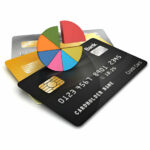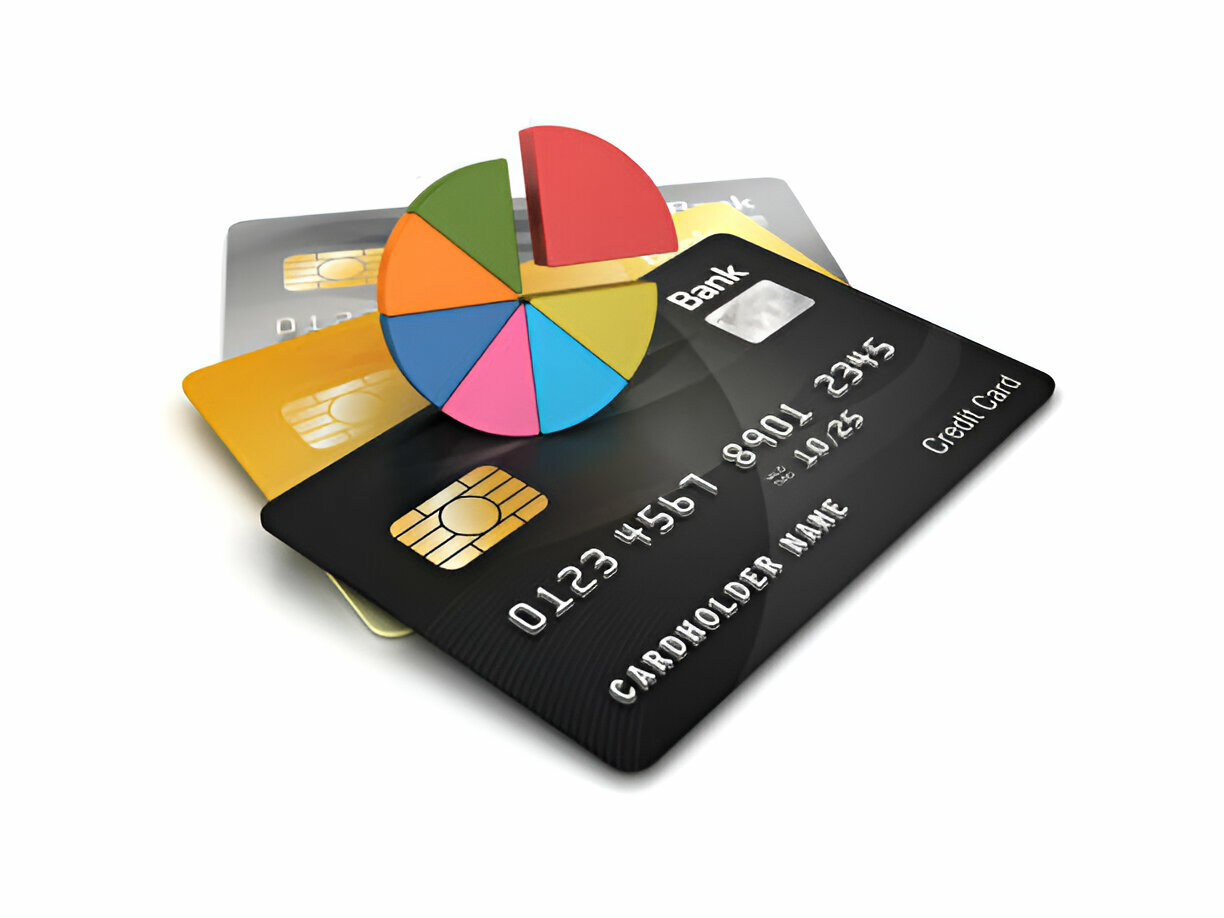Credit utilization—the percentage of your available credit that you’re currently using—can significantly impact your credit score. Financial experts typically recommend keeping this ratio below 30%, but did you know that maintaining it between 1-9% could potentially boost your score even further? Reducing credit card utilization is crucial, as it accounts for approximately 30% of your FICO score calculation, making it one of the most influential factors in determining your creditworthiness. What’s particularly encouraging is that unlike other credit factors, reducing credit card utilization can reflect in your score relatively quickly.
Understanding how to strategically manage your credit utilization opens up numerous opportunities for improving your financial standing. Whether you’re dealing with high balances across multiple cards or simply looking to optimize an already decent score, the right approach to reducing credit card utilization can make a substantial difference. Small adjustments in payment timing, credit limit management, and spending habits can yield impressive results without requiring drastic lifestyle changes. The techniques we’ll cover work for various financial situations—from those rebuilding credit after setbacks to individuals fine-tuning already healthy scores by reducing credit card utilization consistently.
1. Understanding Your Current Credit Utilization
Calculating and Interpreting Your Credit Utilization Ratio
Credit utilization represents the relationship between your current credit card balances and your total available credit limits. To calculate this important metric, divide your total credit card balances by your total credit limits, then multiply by 100 to get a percentage. For example, if you have $2,000 in total balances across all cards with combined credit limits of $10,000, your overall utilization ratio would be 20%. This calculation is a foundational step in reducing credit card utilization effectively. It should be performed both for your overall credit profile and for each individual card you own.

Understanding what constitutes “high” utilization requires recognizing the threshold values that impact your credit score. While conventional financial wisdom suggests keeping utilization below 30%, this represents merely the upper boundary of acceptable utilization rather than an optimal target. In reality, credit scoring models view utilization on a sliding scale—the lower your utilization percentage, the better your score potential. Reducing credit card utilization below 10% can significantly boost your score. Utilization above 50% can damage your credit, while ratios between 30-50% prevent excellent scores. For truly exceptional results, maintaining 1-9% utilization shows lenders you can manage credit responsibly—ultimately by reducing credit card utilization consistently.
Per-Card vs. Overall Utilization: A Dual Consideration
Credit scoring models evaluate utilization in two distinct ways: your overall utilization across all revolving accounts and your per-card utilization on individual cards. Even if your overall utilization is low, a single maxed-out card can negatively impact your score. Therefore, reducing credit card utilization must address both levels. This dual approach ensures your credit score reflects balanced usage rather than over-reliance on a single card.
Credit bureaus include utilization in their models because it acts as a real-time financial behavior indicator. Unlike payment history, which shows past actions, utilization reflects your current financial health. Thus, reducing credit card utilization can impact your score almost immediately—often within a single billing cycle. This is one reason why reducing credit card utilization is considered one of the fastest ways to improve credit.
The Incremental Impact of Utilization Reductions
The relationship between utilization and credit score improvement follows a non-linear path. Small reductions from very high levels (e.g., 90% to 70%) yield modest gains, while significant point jumps happen when you move from 30–50% down to below 10%. This highlights the importance of reducing credit card utilization in strategic steps. For example, going from 45% to 7% might increase your score by 20–40 points depending on your credit profile.
Understanding these threshold effects enables targeted debt reduction plans focused on reducing credit card utilization. Paying off $200 might seem small, but if it drops your utilization from 10.2% to 9.8%, it could push you into a more favorable scoring band. This is why many credit experts emphasize reducing credit card utilization as a priority tactic.
2. Strategic Payment Methods to Lower Utilization
The Critical Importance of Payment Timing
The timing of your credit card payments plays a surprisingly crucial role in reducing credit card utilization. Most issuers report account data to credit bureaus after your statement closing date, not your due date. That means making payments before your statement closes directly lowers your reported balance—effectively reducing credit card utilization without changing your actual spending habits.
For example, if you charge $2,000 monthly on a card with a $4,000 limit, your reported utilization would be 50%. But by paying $1,600 before the statement closes, your reported balance becomes $400—just 10%. This strategy, centered on reducing credit card utilization, can produce visible credit score improvements in a single billing cycle.
Multiple Payment Approaches for Optimal Results
Using bi-weekly payments instead of monthly ones is a smart strategy for reducing credit card utilization. You’ll end up making 13 full payments a year, lowering balances more frequently and minimizing the amount reported to bureaus.
For higher balances, lump-sum payments work best. Paying off one or more smaller cards completely reduces per-card ratios—another method of reducing credit card utilization. Even when full payoff isn’t possible, making payments before statement dates lowers the reported amounts, reinforcing your efforts in reducing credit card utilization across your profile.
The AZEO Method and Optimal Utilization Strategies
The “All Zero Except One” (AZEO) method is a powerful tactic for reducing credit card utilization while maximizing your credit score. The idea: zero balances on all cards except one, which shows a 1–9% balance. This demonstrates responsible usage without total avoidance.
You can automate this process by setting payment reminders or automatic payments that leave a small balance on one card. For example, if a card’s limit is $5,000 and your target is 5%, arrange for a $250 balance to remain at statement closing. For others, pay the full amount. These details are key to consistently reducing credit card utilization.

Key Payment Timing Strategies (with focus on reducing credit card utilization):
- Pay large balances 2–3 days before the statement closing date to reduce reported amounts
- Keep one card at 1–9% utilization while others report zero—this helps in reducing credit card utilization smartly
- Set reminders for reducing credit card utilization by tracking statement closing dates, not just due dates
- Use multiple payments monthly for frequently-used cards to keep balances low
- Align statement dates with your paycheck schedule to make reducing credit card utilization easier and more predictable
3. Credit Limit Management Techniques
Strategic Credit Limit Increase Requests
Requesting credit limit increases is one of the most efficient techniques for reducing credit card utilization without cutting spending. A higher limit automatically improves your utilization ratio as long as your balances remain the same. Most issuers allow limit increase requests every 6–12 months, and having a history of on-time payments and moderate usage increases approval odds.
Before submitting a request, gather your financial information—income, housing expenses, and employment details—to support your case. Many issuers offer online requests that only trigger soft inquiries. This strategy for reducing credit card utilization can be especially helpful if you’ve recently paid off a chunk of debt or improved your credit standing.
Strategic Approaches to New Credit and Balance Distribution
Opening new credit cards also helps in reducing credit card utilization by increasing your overall available credit. This method is best for those with strong histories and disciplined spending habits. Choosing no-annual-fee cards lets you keep them open long-term without added costs, maximizing your available credit.
Balance transfers serve a dual purpose: redistributing high balances and reducing interest payments. For instance, moving $2,000 from a nearly maxed-out card to a high-limit card with zero balance significantly improves your per-card utilization. This approach is especially effective for reducing credit card utilization when you’re struggling with uneven debt distribution across cards.
Maintaining Inactive Accounts and Avoiding Application Pitfalls
Inactive credit cards can be unintentionally closed by issuers, reducing your available credit and increasing your utilization. To avoid this, use each card for a small purchase every few months. Keeping them open supports reducing credit card utilization over the long term by preserving your total credit limit.
Avoid submitting multiple credit applications in a short time, as this can lead to hard inquiries and lower your score. Instead, space applications 3–6 months apart and maintain older accounts. Older cards often have higher limits and longer histories—both valuable for reducing credit card utilization and supporting your overall credit profile.
4. Sustainable Habits for Long-Term Low Utilization
Creating a Personalized Credit Usage Plan
Developing a personal strategy for reducing credit card utilization starts with analyzing your spending patterns. Break your expenses into categories: fixed (like rent), variable (like groceries), and discretionary (like dining out). This helps identify areas where credit can be minimized or replaced with cash or debit—vital for reducing credit card utilization consistently.
Assign specific cards for different expense types to balance usage across your available credit. For example, use a high-limit card for everyday purchases and lower-limit cards for fixed bills. This prevents any single card from being overused, thereby reducing credit card utilization across the board. Set personal utilization alerts at 20% per card to take action before hitting harmful thresholds.
Real-Time Monitoring and Emergency Preparation
Monitoring is essential for reducing credit card utilization consistently. Use mobile apps or spreadsheets to track your balances and utilization weekly. Many credit card issuers now provide real-time utilization tracking and alerts that help you act quickly when limits are approached.
Prepare for unexpected expenses with a “credit protection buffer”—a savings fund specifically for emergencies that would otherwise be charged to your credit card. Using this buffer helps prevent utilization spikes during crises. Whether it’s a car repair or a medical bill, you’ll maintain control by reducing credit card utilization even in financially stressful times.
Seasonal Strategies and Alternative Payment Methods
Holiday spending can increase your utilization by 20–30%. Combat this with a pre-season plan for reducing credit card utilization: make early payments in the months before high-spend periods, and request temporary credit limit increases if needed. Also, time major purchases right after statement closing dates to give yourself more time to pay down the balance.
Incorporate cash and debit for everyday purchases while keeping credit cards active. This hybrid approach supports rewards accumulation without overextending your limits. For those who prefer using credit exclusively, adopt a “same-day payment” habit for small transactions. This habit is a simple but powerful method for reducing credit card utilization without sacrificing convenience or benefits.
5. Advanced Techniques for Credit Score Optimization
Fine-Tuning Your Utilization for Maximum Impact
To reach the ideal 1–9% range, you need precision. Implementing a two-step payment strategy—making a payment a few days before the statement date and another just before the balance posts—can help you stay within optimal utilization. This technique is especially effective for reducing credit card utilization to its most credit-friendly level.
Scoring models evaluate utilization in bands: 9%, 29%, 49%, etc. Moving from 30% to 29% can sometimes boost your score more than reducing from 28% to 20%. Knowing where these thresholds lie allows for more efficient reducing credit card utilization that directly supports your credit improvement goals.
Leveraging Reporting Cycles and Understanding Credit Factors
Timing purchases and payments around reporting cycles helps prevent temporary utilization spikes. By knowing when your card issuer reports to the bureaus, you can strategically make purchases right after that date—buying time before the balance is recorded. This timing strategy plays a key role in reducing credit card utilization over time.
While payment history makes up 35% of your FICO score, utilization impacts 30% and can change your score within a single cycle. This makes reducing credit card utilization one of the fastest ways to boost your credit, especially when paired with good payment habits and age of credit accounts.
Dispelling Utilization Myths and Special Considerations
A common myth is that carrying a balance helps your score. In fact, carrying balances accrues interest and can hurt you unless you’re maintaining a small, controlled balance under 9%. The real win comes from reducing credit card utilization, not from showing you owe money.
Closing old cards also hurts your utilization by reducing your available credit. Instead, maintain those accounts to preserve credit age and limit—which are crucial to reducing credit card utilization over time. For those rebuilding credit, secured cards offer a great way to start this process and see early wins from reducing credit card utilization even with lower limits.
Authorized user accounts are another way to benefit. Joining a family member’s well-managed, low-utilization credit card can improve your own utilization profile. This approach complements your personal strategy for reducing credit card utilization, especially while building or repairing credit.
Conclusion: Mastering Credit Excellence by Reducing Credit Card Utilization
Managing your credit utilization isn’t just about staying below an arbitrary number—it’s about reducing credit card utilization in a way that positions you for long-term credit health. Through precisely timed payments, strategic credit limit increases, and smart usage habits, you can achieve and maintain the ideal utilization range.

Among all credit factors, reducing credit card utilization is one of the few that you can fully control and improve within weeks. Whether you’re recovering from financial missteps or optimizing an already good score, this one action can deliver quick, measurable results. Start implementing these strategies today—and turn reducing credit card utilization into your most powerful credit-building tool.


